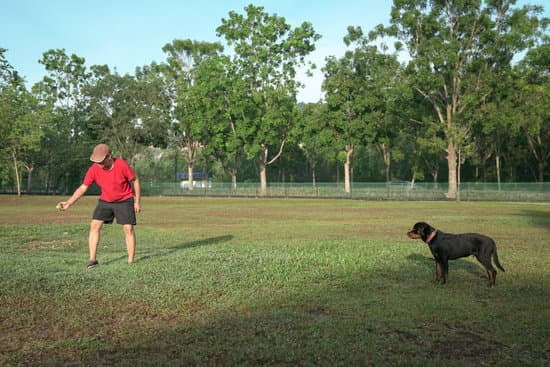Training your dog for car rides is crucial to ensure a safe and enjoyable experience for both you and your furry companion. Dogs that are not properly trained for car travel can exhibit anxiety, fear, or even motion sickness, making the journey stressful for everyone involved. By taking the time to train your dog for car rides, you can help alleviate these issues and create a positive association with traveling in a vehicle.
Understanding your dog’s behavior in cars is essential to address any potential challenges that may arise during car rides. Dogs may exhibit signs of anxiety, fear, or motion sickness, which can lead to discomfort and distress. By recognizing these behaviors and addressing them through training techniques, you can help your dog feel more comfortable and secure during car travel.
Preparing your dog for car travel involves establishing a positive association with the car through gradual desensitization and crate training. Building a sense of safety and comfort in the vehicle will help reduce any negative reactions from your dog while on the road. By implementing basic commands and training techniques, you can ensure that your dog remains calm and well-behaved during car rides, ultimately leading to a smoother and more enjoyable traveling experience.
Understanding Your Dog’s Behavior in Cars
Causes of Anxiety, Fear, and Motion Sickness in Dogs During Car Rides
Dogs, like humans, can experience a range of emotions when it comes to car rides. Anxiety and fear are common reactions in dogs who may not be accustomed to traveling by car or have had negative experiences in the past. Additionally, some dogs may suffer from motion sickness, which can make car rides stressful for both the pet and the owner. Understanding the root causes of these behaviors is crucial in addressing them effectively.
One possible reason for your dog’s anxiety or fear during car rides could be due to a lack of exposure to vehicles at a young age. If your dog has never been properly introduced to cars or has only associated them with trips to the vet, they may view car rides as a scary or unpleasant experience.
On the other hand, motion sickness can be caused by inner ear problems or simply a sensitivity to the motion and vibrations felt in a moving vehicle.
Signs of Anxiety, Fear, and Motion Sickness in Dogs
It’s essential for dog owners to recognize the signs of anxiety, fear, and motion sickness in their canine companions during car rides. These signs may include whining, panting excessively, pacing back and forth, drooling, vomiting, trembling, or trying to escape from the vehicle. By paying attention to your dog’s body language and behavior while on the road, you can better understand their level of discomfort and take appropriate steps to alleviate their stress.
If your dog displays any signs of anxiety or motion sickness before even getting into the car, it’s important not to force them into it. This can worsen their negative associations with car rides and make training more challenging in the long run.
Instead, take gradual steps towards acclimating them to being inside a vehicle by first working on building positive associations with the sight and smell of the car before moving on to actually going for short drives around the block.
Preparing Your Dog for Car Travel
Creating a Positive Environment
One of the first steps in training your dog for car rides is to create a positive environment around the car. Start by allowing your dog to explore and sniff around the car while it is parked in a safe location. Use treats, toys, and praise to associate positive feelings with being close to the vehicle. This will help reduce any fear or anxiety your dog may have towards getting into the car.
Short Trips and Rewards
Once your dog is comfortable being near the car, start with short rides around the block or to a nearby park. Gradually increase the duration of these trips as your dog becomes more at ease with car travel. Offer rewards such as treats, verbal praise, or their favorite toy during and after each successful ride. This will reinforce positive behavior and further establish a good association with car rides.
Consistency Is Key
Consistency is crucial when training your dog for car rides. Make sure to stick to a routine when it comes to taking them on trips in the car. Avoid abrupt stops or sudden movements that could startle or cause stress to your furry friend.
By maintaining a calm and consistent approach, you can help your dog feel secure and relaxed during future car rides. Remember, patience and positive reinforcement are key components in successfully training your dog for enjoyable travel experiences.
Crate Training for Car Rides
Crate training is an essential aspect of preparing your dog for car rides. It provides a safe and secure space for your furry friend while traveling, reducing the likelihood of accidents or injuries. Here are some steps on how to train your dog for car rides using a crate:
- Choose the right crate size: Ensure that the crate is large enough for your dog to stand, turn around, and lie down comfortably. A cozy environment will help keep your pet calm during the ride.
- Introduce the crate gradually: Start by placing treats or toys inside the crate to create a positive association. Allow your dog to explore the crate at their own pace before encouraging them to enter.
- Practice short trips: Begin with short drives around the block to get your dog accustomed to being in the crate while in motion. Gradually increase the duration of these trips as your pet grows more comfortable.
Crate training can also be beneficial in preventing distractions while driving, keeping both you and your dog safe on the road. Remember to always secure the crate properly in your vehicle and provide plenty of breaks during long journeys.
Properly acclimating your dog to a crate will not only ensure their safety during car rides but also create a sense of security and comfort for them With patience and consistency, you can help build a positive association with traveling in a car, making future journeys more enjoyable for both you and your beloved canine companion.
Basic Commands and Training Techniques for Calm Car Rides
Training your dog for car rides is an essential part of ensuring both their safety and your peace of mind while traveling together. Teaching your furry companion basic commands and training techniques can make a significant difference in their behavior during car rides. One of the fundamental commands to teach your dog is “sit,” which can help them stay still and calm while inside the vehicle. You can practice this command at home first before introducing it in the car.
Another important command to teach your dog for car rides is “stay.” This command can be useful when you need your dog to remain in a specific position, such as staying seated on their designated spot in the back seat.
By practicing this command consistently, you can help your dog understand that they should remain calm and relaxed during car rides. Additionally, teaching your dog the “down” command can also be beneficial for encouraging them to lie down and relax while traveling in the car.
In addition to basic commands, training techniques such as positive reinforcement can be highly effective in promoting good behavior during car rides. Rewarding your dog with treats, praise, or toys when they exhibit calm behavior in the car can help create a positive association with traveling.
Consistency, patience, and plenty of practice are key elements in successfully training your dog for car rides. By using these basic commands and training techniques, you can help your furry friend become a happy and well-behaved travel companion.
Gradual Desensitization
Training your dog for car rides can be a gradual process, especially if your furry friend has shown signs of anxiety or fear in the past. By slowly introducing them to the car and making every experience positive, you can help them become more comfortable and confident during travel. Here are some steps to help you with the gradual desensitization process:
- Start by simply sitting in the parked car with your dog without turning on the engine. This allows them to get used to being in the confined space without any motion.
- Once your dog seems relaxed in the parked car, try turning on the engine without moving. Reward them with treats or praise for staying calm and relaxed.
- Next, take short drives around the block or to a nearby park. Keep these initial trips brief and enjoyable, gradually increasing the duration as your dog becomes more accustomed to being in the car.
Remember to always stay patient and stay attuned to your dog’s body language and reactions during each step of the desensitization process. Positive reinforcement and consistent training will be key in helping your furry companion overcome any fears or anxieties they may have about car rides.
- Additionally, consider using calming aids such as pheromone sprays or music designed specifically for dogs during car rides to help keep them relaxed and focused.
- If your dog continues to show signs of stress or fear despite your efforts, consider seeking professional help from a certified dog trainer or behaviorist who specializes in anxiety-related issues.
Tips for a Successful Car Ride
Taking your dog on car rides can be a fun and enjoyable experience for both you and your furry companion. However, it is essential to plan ahead and make necessary preparations to ensure a successful car ride. Here are some tips on how to train your dog for car rides by planning ahead:
Firstly, it is crucial to start training your dog for car rides gradually. Begin by simply sitting in the parked car with your dog without starting the engine. This will help them get accustomed to being in a stationary car before moving on to short drives around the block.
Another important tip is to make sure that your dog is comfortable inside the car. Consider using a well-ventilated crate or pet seat belt to ensure their safety during the ride. You can also place familiar blankets or toys inside the car to create a sense of security for your pet.
Additionally, it’s beneficial to take frequent breaks during long car rides to allow your dog to stretch their legs, go potty, and have some water. This will help reduce any anxiety or restlessness they may experience during the journey. By planning ahead and making these necessary preparations, you can help create a positive and enjoyable experience for your dog when traveling in the car.
| Tips for Successful Car Rides | Planning Ahead |
|---|---|
| Start training gradually | Begin with stationary car |
| Ensure comfort in the car | Use crate or pet seat belt |
| Take frequent breaks | Allow stretching, potty breaks, water |
Overcoming Specific Challenges
Your dog may exhibit specific challenges such as aggression, barking, or excessive panting during car rides, making the experience stressful for both you and your furry companion. To address these issues, it is essential to incorporate training techniques that can help your dog feel more comfortable and relaxed in the car. Here are some tips on how to train your dog for car rides and overcome these challenges.
One effective method to deal with aggression or barking in the car is desensitization training. Start by gradually exposing your dog to the car while providing positive reinforcement for calm behavior. Use treats, toys, or verbal praise to reward your dog whenever they display calm behavior in the car. This will help create a positive association with car rides and reduce anxiety or fear that may trigger aggressive or barking behavior.
Excessive panting during car rides can be a sign of stress or motion sickness in dogs. To address this issue, make sure your dog is comfortable and secure in the car. Crate training can provide a safe space for your dog during travel, reducing anxiety and promoting relaxation.
Additionally, consult with your veterinarian about possible remedies for motion sickness, such as medication or natural supplements that can help alleviate symptoms. By taking proactive steps and using effective training techniques, you can help your dog overcome specific challenges during car rides and ensure a more enjoyable experience for both of you.
| Challenge | Training Tip |
|---|---|
| Aggression | Use desensitization training and positive reinforcement to create a positive association with car rides. |
| Barking | Reward calm behavior with treats or praise while gradually exposing your dog to the car. |
| Excessive Panting | Ensure comfort in the car, consider crate training, consult with a vet for motion sickness remedies. |
Conclusion
Training your dog for car rides is a crucial aspect of responsible pet ownership. By taking the time to properly prepare and train your furry companion, you can ensure a safe and enjoyable experience for both of you whenever you hit the road. Through understanding your dog’s behavior, preparing them for travel, crate training, and implementing basic commands, you can help alleviate anxiety, fear, and motion sickness that may arise during car rides.
One of the key elements in training your dog for car rides is establishing a positive association with the vehicle. By gradually introducing your dog to the car in a gentle and positive manner, you can help them become more comfortable and relaxed during future trips. Additionally, crate training can provide a sense of security and safety for your dog while on the road, creating a calming environment that promotes good behavior.
Ultimately, by investing time and effort into training your dog for car rides, you are not only ensuring their safety but also strengthening the bond between you and your pet. Building trust through training sessions and providing a secure environment during travels can deepen the connection between you and your furry companion.
So don’t hesitate to start implementing these techniques on how to train your dog for car rides – both you and your four-legged friend will reap the benefits of a smoother ride together.
Frequently Asked Questions
Can You Train Your Dog to Like Car Rides?
It is possible to train your dog to enjoy car rides through positive reinforcement techniques. Start by associating the car with pleasant experiences, such as treats or short rides to fun destinations.
How Do I Calm My Dog Down on a Car Ride?
To calm your dog down during a car ride, start by creating a comfortable environment in the car. Use calming aids like calming wraps or sprays, play soothing music, and ensure your dog has good ventilation and visibility.
How Do I Prepare My Dog for a Long Car Ride?
Preparation is key for a long car ride with your dog. Make sure your pup is comfortable being in the car by taking shorter trips before the long journey. Pack essentials like food, water, toys, blankets, and any medications they may need on the road.

Welcome to the blog! I am a professional dog trainer and have been working with dogs for many years. In this blog, I will be discussing various topics related to dog training, including tips, tricks, and advice. I hope you find this information helpful and informative. Thanks for reading!





